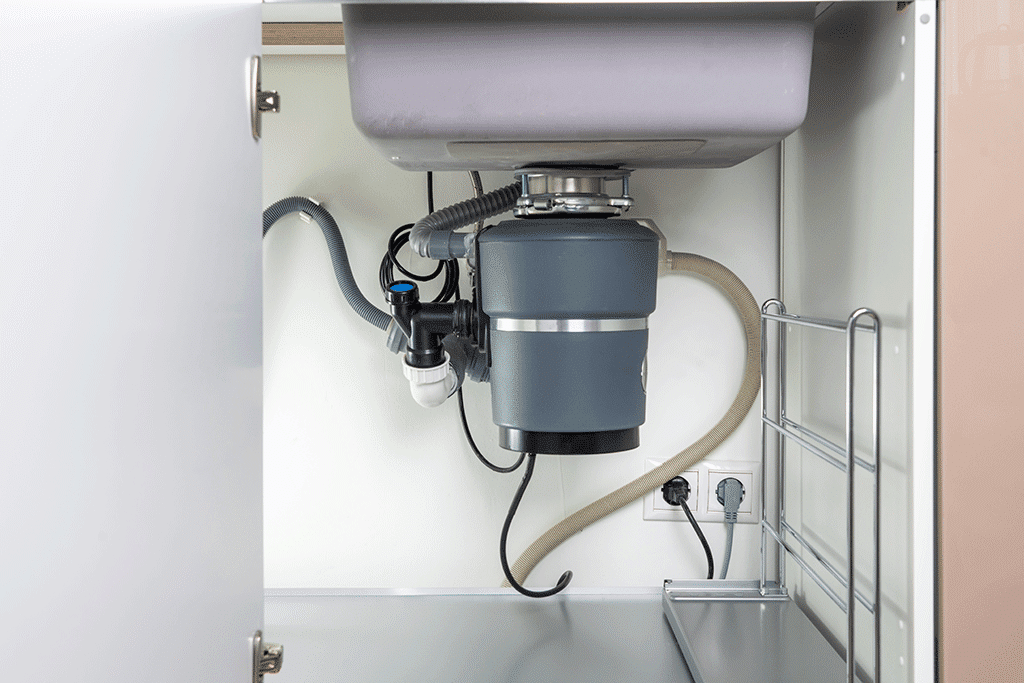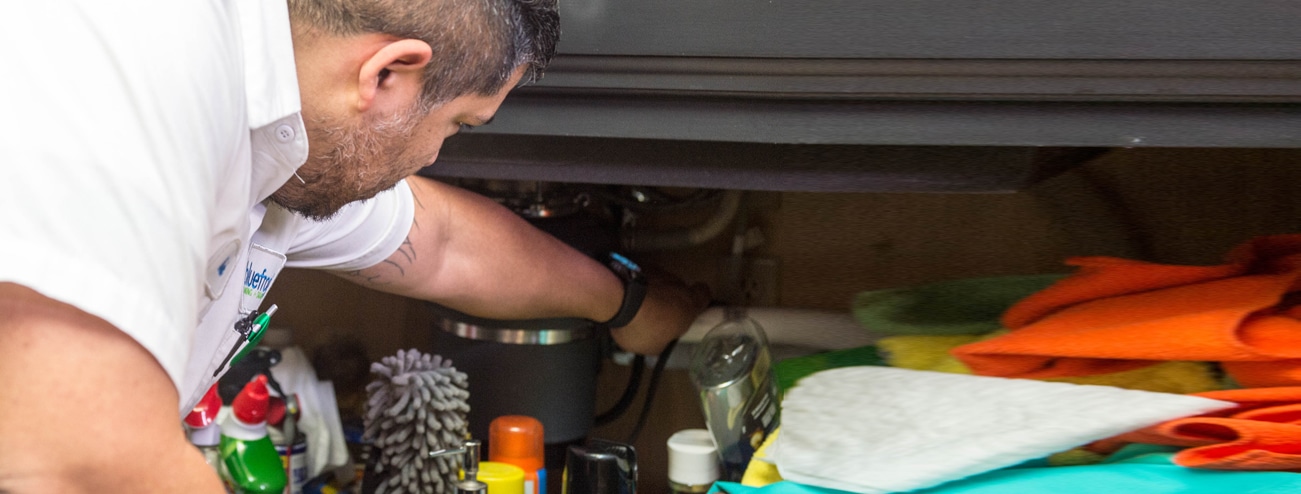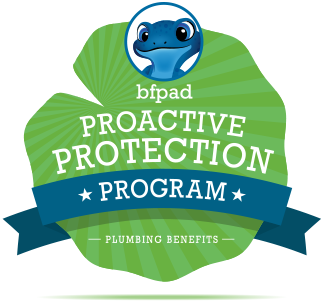
Expert Advice on Garbage Disposal Maintenance
Is your garbage disposal giving you trouble?
Maintaining your garbage disposal is crucial to ensure it operates efficiently and lasts longer. Regular maintenance not only prevents common issues but also saves you from unexpected breakdowns and costly repairs.
A well-maintained waste disposal is essential for a clean and functional kitchen. It helps in managing food waste effectively, reducing the amount of trash that goes to landfills.
However, neglecting its maintenance can lead to various problems, such as clogs, jams, and unpleasant odors. These issues not only disrupt your daily routine but can also result in more significant plumbing problems if unaddressed.
Understanding the importance of regular maintenance and being aware of these common issues can help you take proactive steps to keep your garbage disposal in top condition.
In the following sections, we will delve deeper into how a garbage disposal works, daily usage tips, cleaning methods, and much more to ensure your unit runs smoothly and efficiently.

How a Garbage Disposal Works
Understanding how your garbage disposal works is the first step in maintaining it properly. A waste disposal is a kitchen appliance designed to shred food waste into small pieces so they can pass through plumbing. Here’s a closer look at its basic components and functionality.
Basic Components
A typical garbage disposal consists of the following key parts:
- Motor: Powers the grinding mechanism.
- Grinding Chamber: Houses the shredding blades.
- Shredder Ring: Grinds the food waste.
- Impellers: Help push the food waste towards the shredder ring.
- Flywheel: Rotates the shredder ring and impellers.
- Drainage System: Allows ground waste to exit the unit and flow through the plumbing.
Functionality Overview
When you turn on your garbage disposal, the motor activates the flywheel, causing the impellers and shredder ring to spin rapidly. Here’s a step-by-step breakdown of how it works:
- Food Waste Enters: You feed food scraps into the disposal through the sink drain.
- Grinding Process: The impellers push the food waste against the shredder ring, grinding it into tiny particles.
- Water Flow: Cold water from the faucet helps flush the ground particles down the drain.
- Waste Removal: The tiny food particles flow through the plumbing and into the sewer or septic system.
How to Ensure Proper Functioning
To keep your waste disposal working efficiently, follow these tips:
- Run Cold Water: Always use cold water when operating the disposal to solidify grease and oils, making them easier to grind.
- Avoid Fibrous Foods: Do not dispose of fibrous items like celery, corn husks, or onion skins, as they can wrap around the shredder ring and cause jams.
- Cut Large Waste: Chop large pieces of food waste into smaller chunks before feeding them into the disposal.
- Regular Cleaning: Clean the disposal regularly to prevent build-up and odors.
Understanding these components and how they work together will help you maintain your waste disposal better and troubleshoot any issues that arise. Next, we’ll discuss daily usage tips to extend the life of your garbage disposal.
Daily Usage Tips for Longevity
Maintaining your waste disposal with good daily habits can significantly extend its lifespan and ensure it operates efficiently. Here are some do’s and don’ts, along with best practices for everyday use.
Do’s and Don’ts
Do’s
- Run Cold Water: Always run a steady stream of cold water before, during, and after using the disposal to help solidify any grease or fat, making it easier for the unit to grind up.
- Use in Moderation: Feed food waste into the disposal gradually to prevent overloading and ensure thorough grinding.
- Regular Cleaning: Clean the disposal regularly using safe methods to prevent build-up and odors.
- Grind Citrus Peels: Occasionally grind citrus peels like lemon or orange to freshen up the disposal and help clean the blades.
- Cut Large Items: Break up large food scraps into smaller pieces to avoid overwhelming the disposal.
Don’ts
- Avoid Grease and Oil: Do not pour grease, oil, or fat down the disposal as they can solidify and cause blockages.
- No Hard Items: Avoid grinding hard items like bones, pits, and shells which can damage the blades and motor.
- No Fibrous Foods: Steer clear of fibrous foods like celery, corn husks, and onion skins that can tangle and jam the disposal.
- Avoid Non-Food Items: Never put non-food items like plastic, glass, or metal into the disposal.
- Limit Starchy Foods: Be cautious with starchy foods like pasta, rice, and potato peels that can expand and clog the disposal.
Best Practices for Everyday Use
- Flush with Cold Water: Run cold water for at least 15 seconds before and after using the disposal to ensure food particles are thoroughly flushed through the plumbing.
- Use Disposer-Safe Cleaning Products: Use products specifically designed for garbage disposals to clean and deodorize.
- Grind Ice Cubes: Periodically grind a few ice cubes to help clean the blades and remove debris.
- Monitor for Unusual Noises: Pay attention to any unusual noises during operation as they can indicate a problem that needs addressing.
- Keep it Fresh: Drop in small amounts of baking soda and vinegar, let it sit for a few minutes, then rinse with cold water to eliminate odors and clean the unit.
By following these daily usage tips, you can keep your garbage disposal in optimal condition, reducing the likelihood of problems and extending its lifespan. Next, we’ll explore the signs that indicate your garbage disposal needs maintenance.
Signs Your Garbage Disposal Needs Maintenance
Your garbage disposal is an essential kitchen appliance, and recognizing when it needs maintenance can save you from costly repairs and inconvenient breakdowns. Here are common symptoms that indicate your garbage disposal requires attention and when to seek professional help, especially if you’re in Richardson, TX.
Common Symptoms of Issues
- Unusual Noises: If you hear grinding, rattling, or other strange noises, it could indicate a foreign object is stuck in the disposal or that the components are wearing out.
- Frequent Clogs: Regular clogs, even with proper use, may signal that the disposal blades are dull or there’s a build-up inside the unit.
- Slow Draining: If water drains slowly from your sink, it might mean that the disposal or the plumbing connected to it is blocked.
- Persistent Odors: Lingering bad smells despite cleaning efforts can indicate trapped food particles or bacteria build-up in hard-to-reach areas.
- Leaking: Water pooling under your sink or around the disposal unit suggests a possible leak from the unit itself or the connecting pipes.
- Power Issues: If the disposal won’t turn on or frequently trips the reset button, there could be an electrical problem or a jammed motor.
When to Seek Professional Help in Richardson, TX
Recognizing when to call a professional can prevent further damage and ensure your garbage disposal is fixed correctly. Here are situations when professional help is recommended:
- Electrical Problems: Issues like the disposal not turning on or frequently tripping the circuit breaker should be handled by a professional to avoid electrical hazards.
- Persistent Clogs or Jams: If plunging or manual removal doesn’t resolve clogs or jams, a professional can safely dismantle and clean the unit.
- Leaking Unit: Professionals can identify the source of leaks, whether it’s a worn-out gasket, a crack in the disposal unit, or a plumbing issue.
- Unresolved Odors: If DIY cleaning methods don’t eliminate odors, a professional can deep clean and sanitize the unit.
- Blade Replacement: Dull blades can be replaced by a professional to restore the disposal’s grinding efficiency.
Local Service Options
For residents in Richardson, TX, numerous local plumbing services specialize in waste disposal maintenance and repair. These services offer:
- Experienced Technicians: Skilled professionals who can quickly diagnose and fix disposal issues.
- Emergency Services: Availability for urgent repairs to prevent further damage or inconvenience.
- Preventative Maintenance: Regular check-ups and maintenance plans to keep your disposal in top shape.
Waste disposal maintenance is essential for a functional kitchen and for preventing plumbing issues. Recognizing these signs and knowing when to seek professional help can save you time, money, and hassle. In the next section, we’ll go through the step-by-step process of cleaning your garbage disposal.
How to Clean Your Garbage Disposal
Cleaning your garbage disposal regularly is vital to maintain its efficiency and prevent unpleasant odors. Here’s a step-by-step guide to effectively clean your waste disposal and the recommended materials to use.
Step-by-Step Cleaning Process
- Turn Off the Power: Ensure the waste disposal is turned off. Unplug it from the power source or turn off the circuit breaker to prevent any accidents.
- Inspect the Disposal: Look inside the disposal with a flashlight. Use pliers or tongs to remove any visible debris or foreign objects. Never use your hands.
- Flush with Water: Run a stream of cold water into the disposal for 30 seconds to rinse away loose particles.
- Add Cleaning Agents: Pour a half-cup of baking soda into the disposal, followed by a cup of white vinegar. Let the mixture fizz and sit for 5-10 minutes to break down the grime.
- Scrub the Blades: Use an old toothbrush or a stiff brush to scrub the inside of the disposal and the underside of the splash guard (the rubber flaps around the drain). Be thorough but gentle to avoid damaging the blades.
- Rinse Thoroughly: Turn on the cold water and run the disposal to flush out the baking soda and vinegar mixture, along with any loosened debris.
- Deodorize: To eliminate odors, grind a few ice cubes and a handful of coarse salt in the disposal. The ice sharpens the blades, and the salt scrubs away residues. Follow this by grinding citrus peels (like lemon or orange) to leave a fresh scent.
Recommended Cleaning Materials
- Baking Soda and Vinegar: Effective for breaking down grease and grime and neutralizing odors.
- Ice Cubes and Salt: Helps in scrubbing the blades and grinding chamber.
- Citrus Peels: Provides a natural, fresh scent and helps clean the unit.
- Old Toothbrush: Useful for scrubbing hard-to-reach areas.
- Mild Dish Soap: For routine cleaning and to help remove grease.
Additional Tips
- Regular Cleaning: Clean your garbage disposal every one to two weeks to prevent build-up and odors.
- Avoid Harsh Chemicals: Do not use bleach or drain cleaners, as they can damage the disposal’s components and plumbing.
- Use Cold Water: Always use cold water when running the disposal, as it helps solidify fats and grease, making them easier to grind and flush away.
By following these steps and using the recommended materials, you can keep your garbage disposal clean and functioning efficiently. Regular cleaning not only improves performance but also extends the lifespan of your unit. Next, we’ll discuss natural cleaning solutions that are both effective and eco-friendly.
Preventative Maintenance Tips
Regular preventative maintenance is crucial for ensuring your garbage disposal runs smoothly and lasts longer.
Establishing a maintenance schedule and using the right tools and products can help you avoid common issues like clogs, jams, and odors. Here’s how you can keep your garbage disposal in top condition with regular care.
Regular Maintenance Schedule
- Weekly Cleaning: Once a week, clean your garbage disposal to prevent build-up and odors. Use natural cleaning solutions like a mixture of baking soda and vinegar, or ground ice cubes and citrus peels to freshen and clean the unit.
- Monthly Deep Cleaning: Every month, perform a more thorough cleaning. Use a disposal brush or an old toothbrush to scrub the splash guard and the grinding chamber. Ensure to rinse thoroughly with cold water.
- Quarterly Inspection: Every three months, inspect your garbage disposal for signs of wear and tear. Check for leaks, unusual noises, or any visible damage. If you notice any issues, address them promptly to prevent further damage.
- Bi-Annual Professional Check-Up: Schedule a professional inspection and maintenance service every six months. A professional plumber can identify potential problems early and ensure your disposal is in optimal working condition.
Tools and Products for Maintenance
- Disposal Brush: A specialized disposal brush can reach the hard-to-clean areas of your unit, such as the splash guard and the grinding chamber. Regular brushing helps remove stuck-on food particles and grime.
- Baking Soda and Vinegar: This natural cleaning duo is effective in breaking down grease and grime, neutralizing odors, and maintaining a clean disposal.
- Ice Cubes: Grinding ice cubes helps sharpen the blades and remove debris stuck in the grinding chamber. Combine ice with coarse salt for an extra abrasive cleaning effect.
- Citrus Peels: Grinding citrus peels not only freshens the disposal but also helps clean the blades and grinding chamber with their natural oils.
- Plunger: A sink plunger can help dislodge minor clogs in the garbage disposal and the connecting pipes. Use it carefully to avoid damaging the unit.
- Allen Wrench: Most disposals come with an Allen wrench (or hex key) that can be used to manually rotate the motor and dislodge jams. Insert the wrench into the hex socket located at the bottom of the unit and turn it back and forth to free the jam.
- Waste Disposal Cleaner: Commercial waste disposal cleaners are available and can be used periodically to maintain cleanliness and deodorize the unit. Ensure they are safe for your specific disposal model.
By following these preventative maintenance tips and incorporating them into your routine, you can ensure your waste disposal operates efficiently and remains in good working condition for years to come. Next, we’ll discuss the signs that indicate it’s time to replace your garbage disposal and how to choose the right model.

FAQ Section
- How often should I clean my garbage disposal?
It’s recommended to clean your waste disposal weekly with natural cleaning solutions like baking soda and vinegar and perform a deep clean monthly. Regular maintenance helps prevent build-up and odors.
- Can I put grease or oil down the garbage disposal?
No, you should avoid putting grease, oil, or fat down the garbage disposal. These substances can solidify and cause blockages in the plumbing.
- What should I do if my garbage disposal is jammed?
First, turn off the power to the disposal. Use an Allen wrench to manually rotate the motor from the bottom of the unit to dislodge the jam. If this doesn’t work, it’s best to call a professional plumber to avoid damaging the unit.
- Why does my waste disposal smell bad?
Bad odors are usually caused by trapped food particles or grease build-up. Clean your disposal regularly with baking soda and vinegar or grind citrus peels to help eliminate odors.
- When should I replace my garbage disposal?
Consider replacing your waste disposal if it frequently clogs, jams, leaks, or makes unusual noises, and if repairs are becoming too frequent and costly. A typical garbage disposal lasts about 10-15 years.
By following these guidelines and tips, you can ensure your garbage disposal remains efficient and reliable.
What are some other tips you have found helpful in maintaining your garbage disposal? Share your experiences and suggestions below!




















